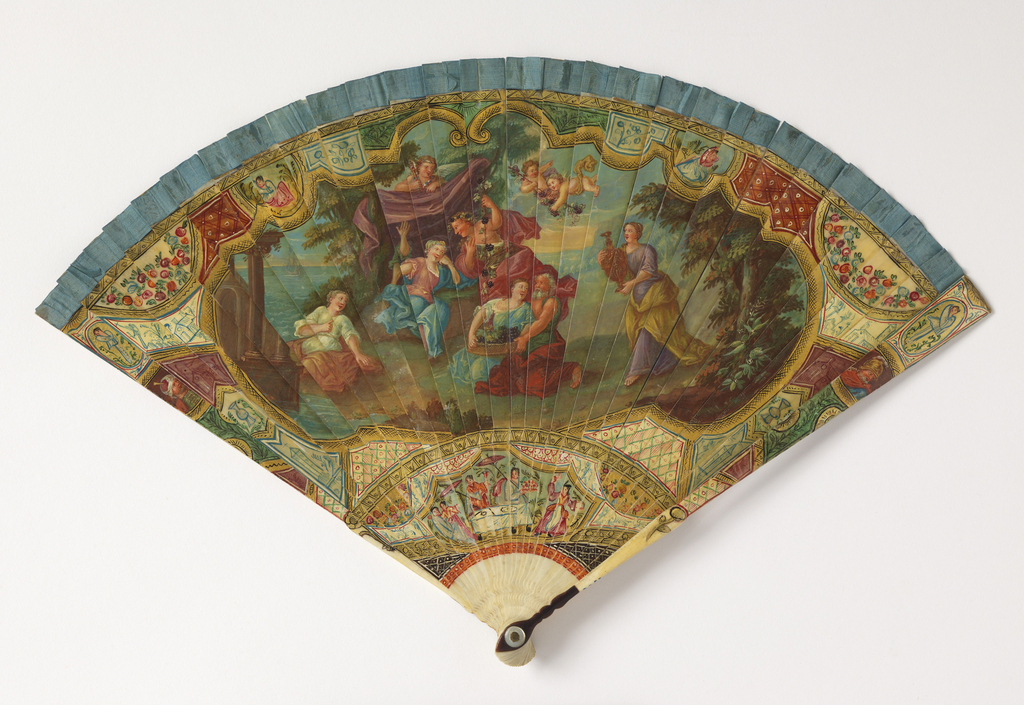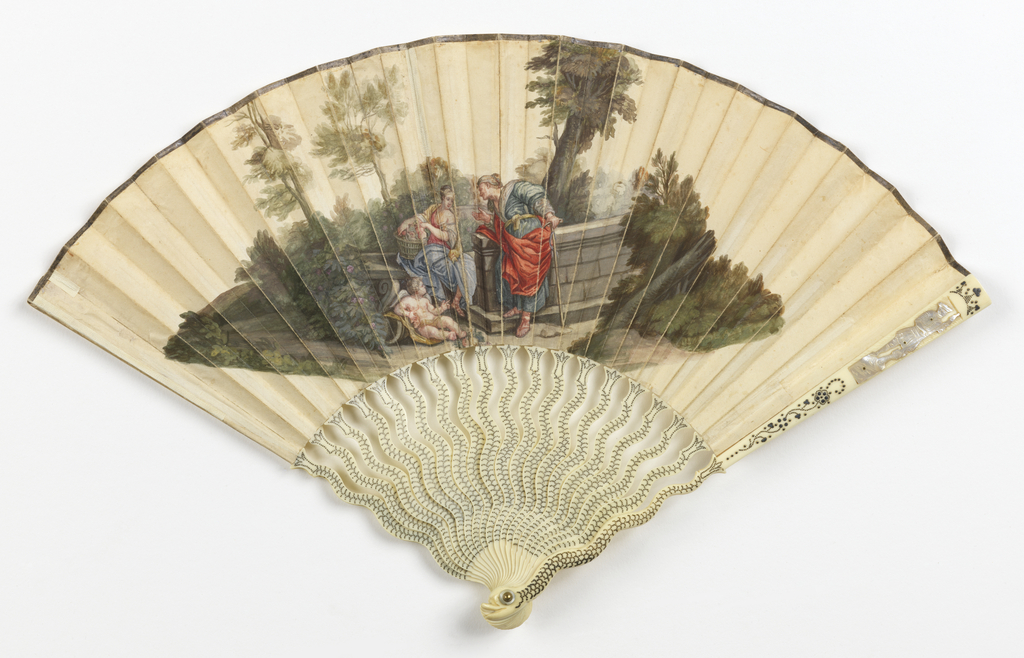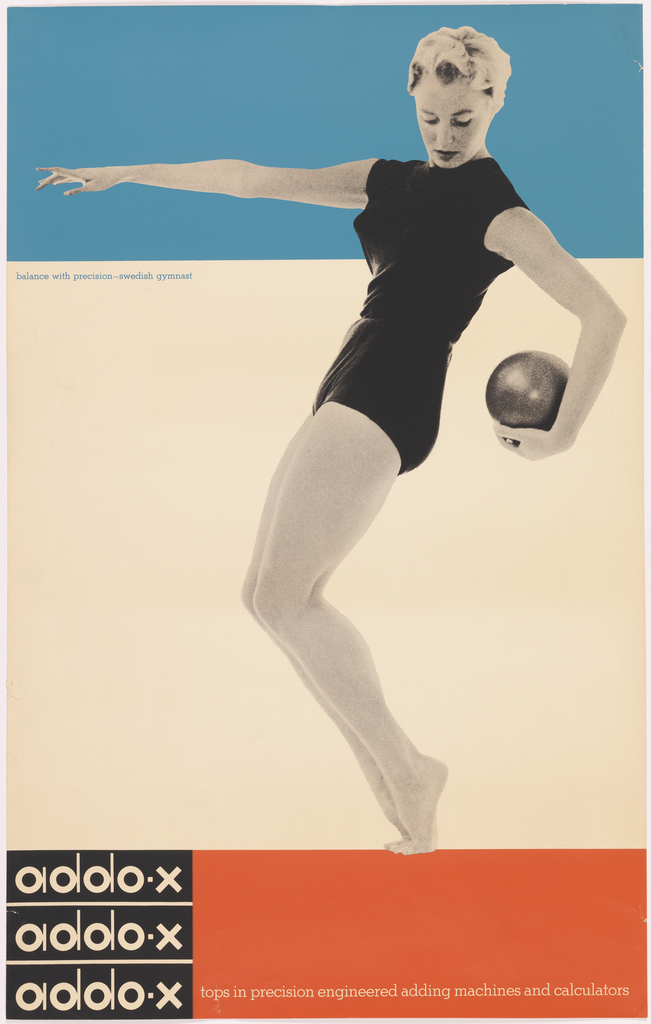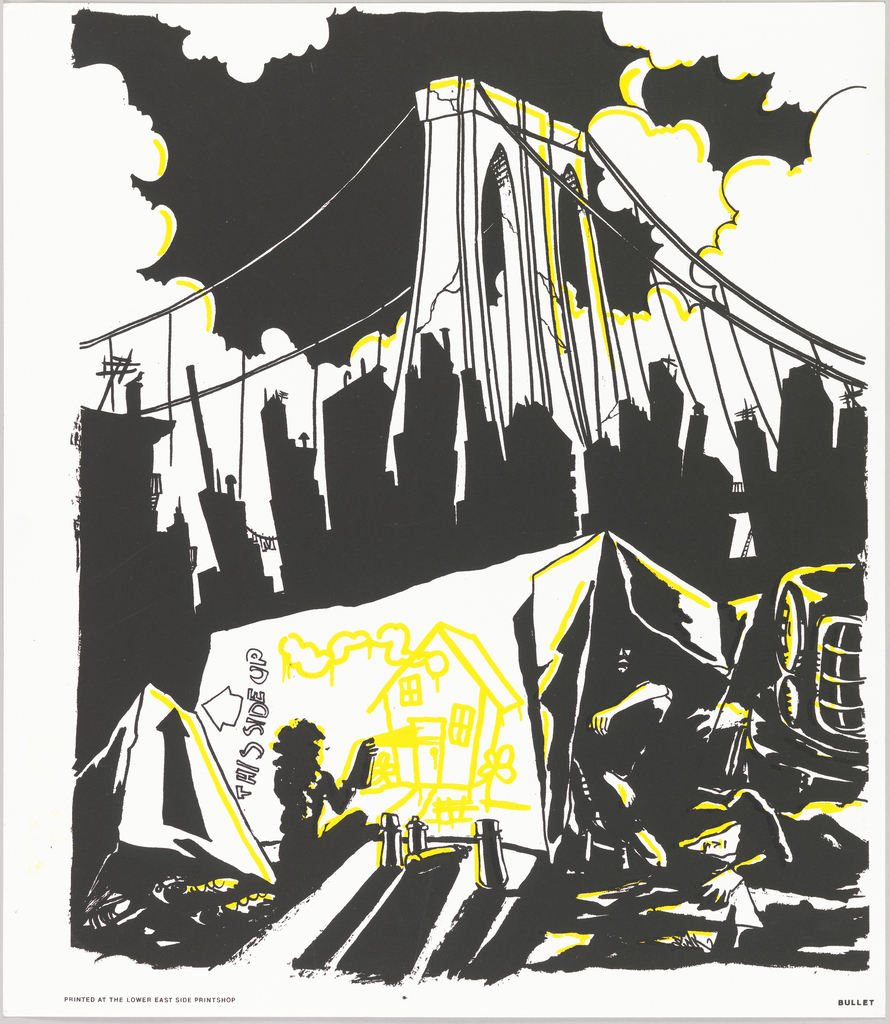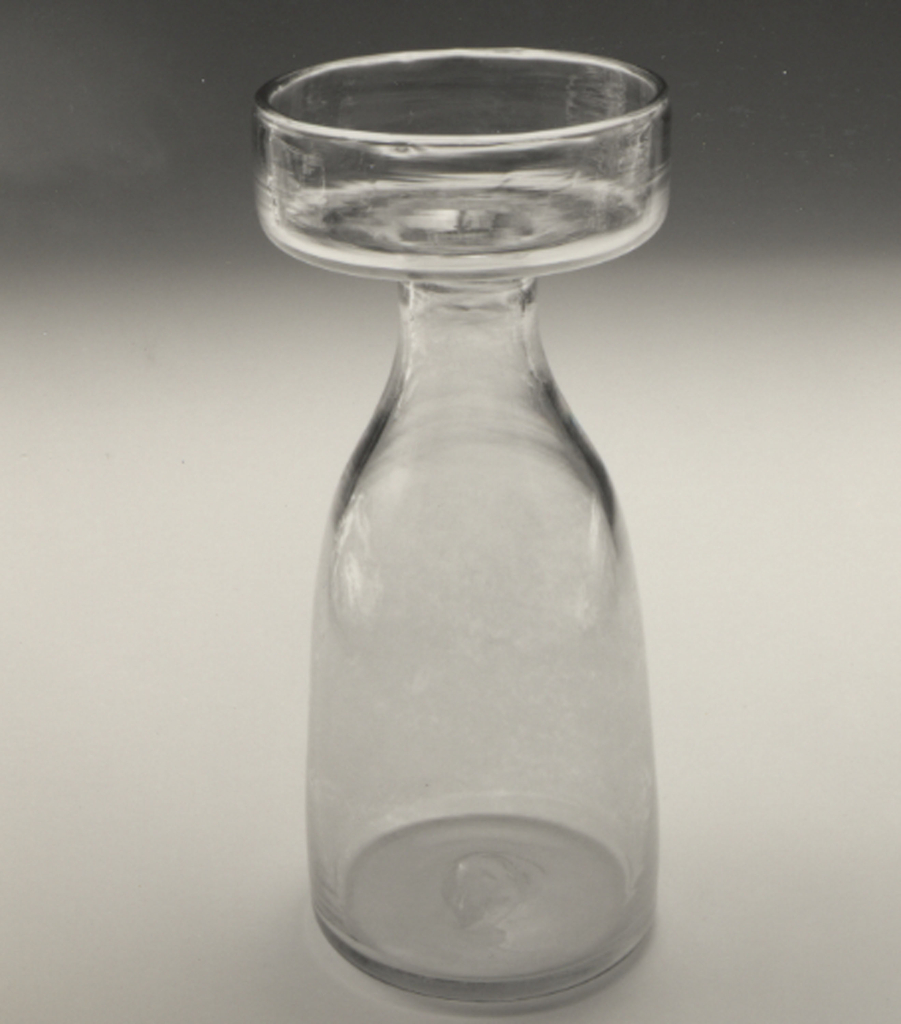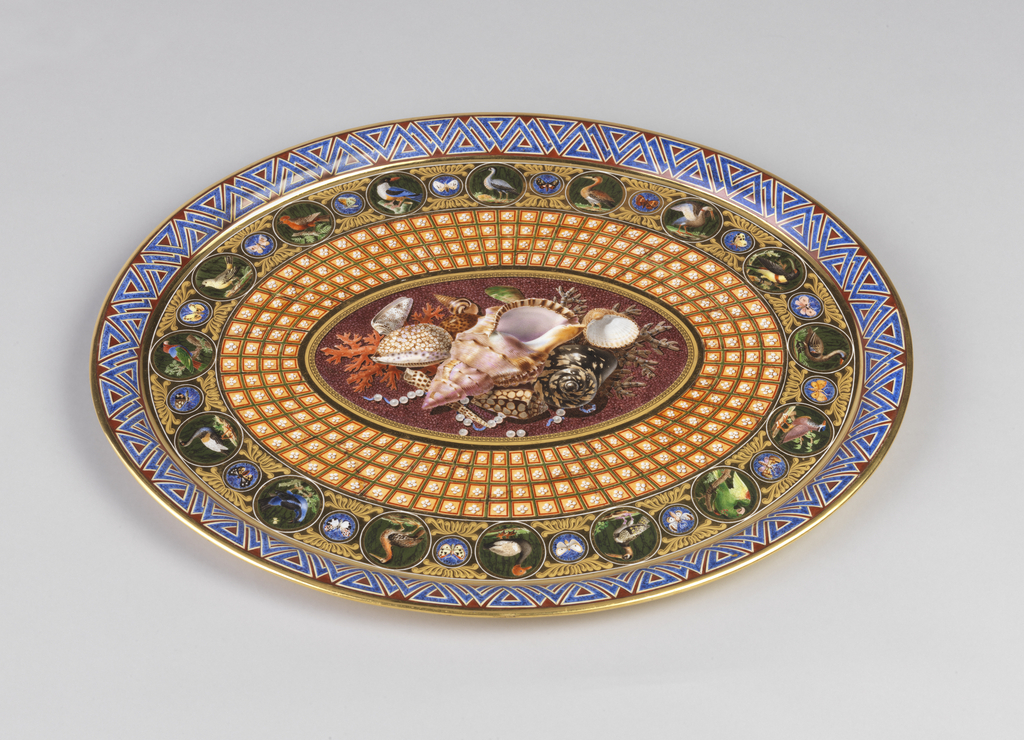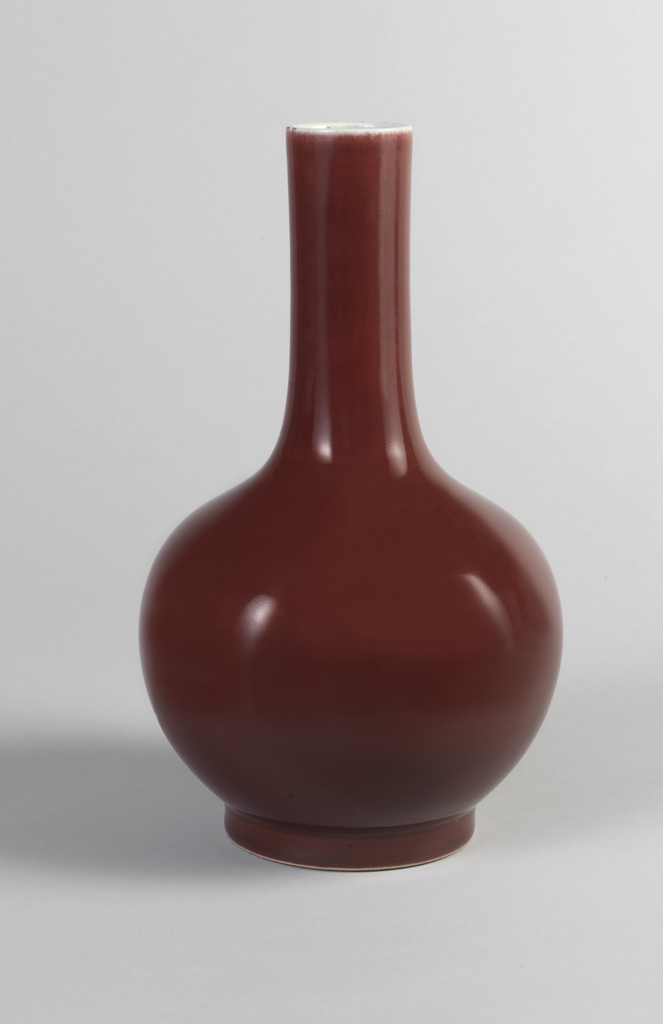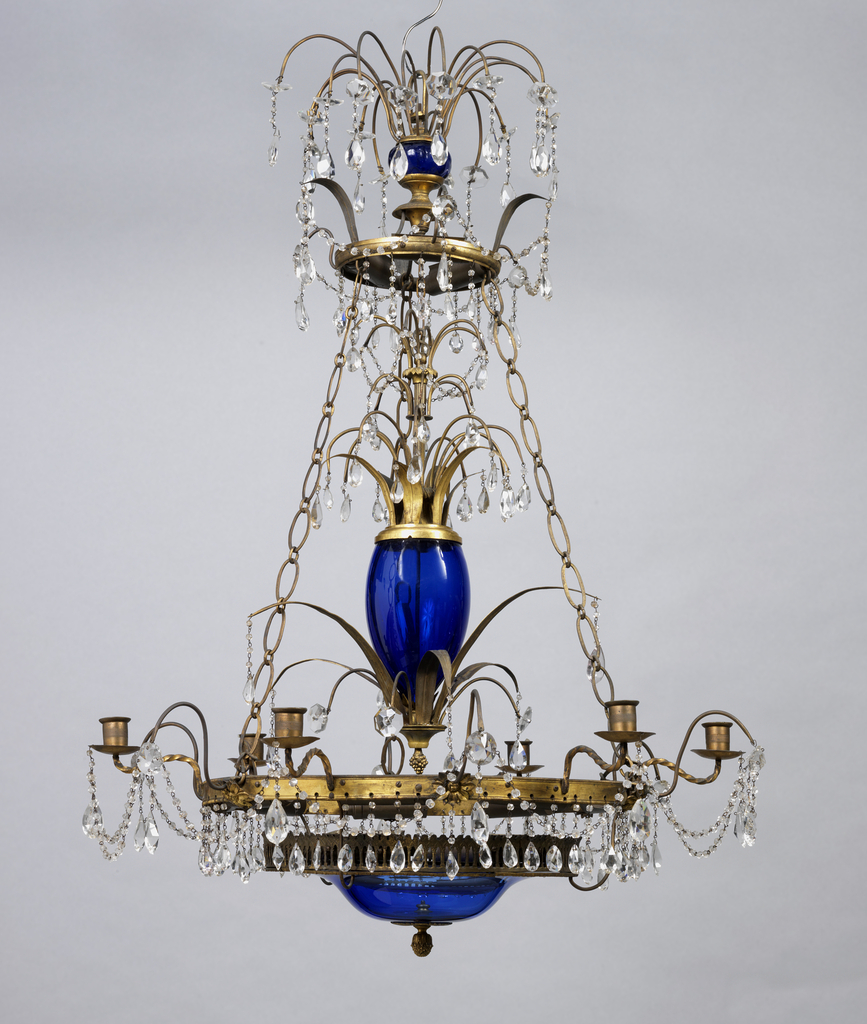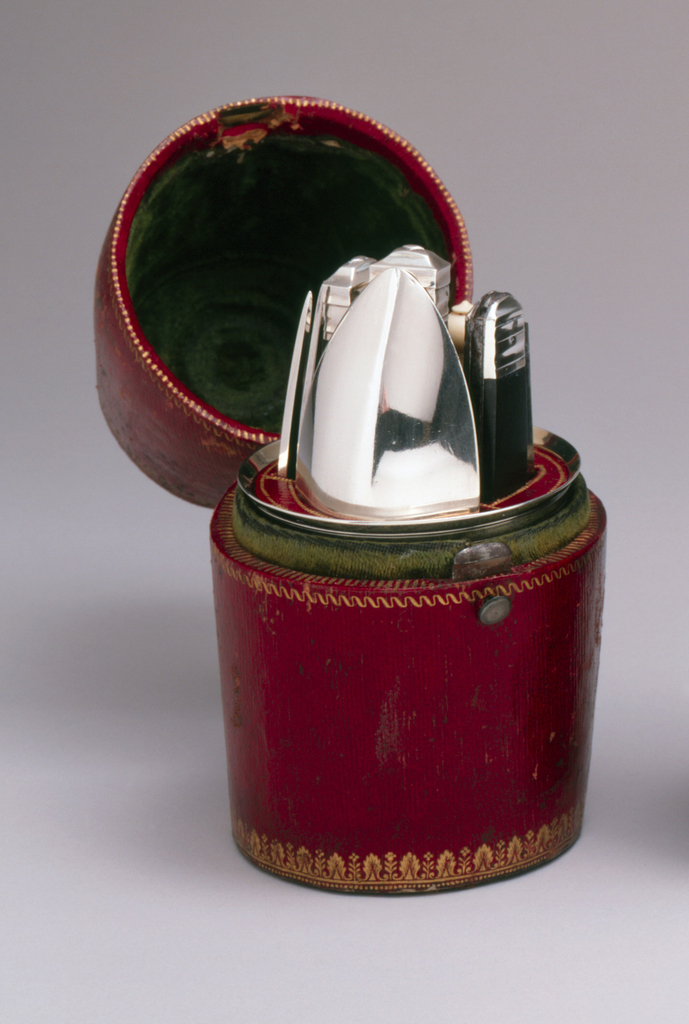This brisé fan (one consisting of rigid sticks joined with a ribbon) illustrates a story from ancient Greek mythology. Dionysus, the god of wine, finds Ariadne on the Island of Naxos. Ariadne, the daughter of King Minos of Crete, has fled away with Theseus, slayer of the Minotaur, and been deserted by him on the...
This fan depicts a scene from Roman mythology in which Vertumnus, god of orchards, seduces the nymph Pomona, steward of fruit trees, by assuming the guise of an old woman. The story is best known from Ovid’s Metamorphoses, a collection of myths centered around the recurring themes of love and transformation. Such tales were apt...
We see posters not only with our eyes but with our bodies. In this sense, we respond physically to the taut pose of the elegant athlete in Ladislav Sutnar’s 1958 poster for Addo-X. Sutnar created a bold new logotype for the Swedish office machine brand in 1956; he also designed numerous posters and advertisements for...
During the 1980s, there was a severe housing crisis in New York City. The building of residential properties had declined during the economic depression of the preceding decade and the limited supply of affordable housing caused a sharp increase in homelessness. In neighbourhoods like the Lower East Side, absentee landlords permitted old buildings to fall...
This distinctly shaped glass vessel, with its thin tapering neck and wide body, was specially designed for growing flowering plants in their off-season, a process known as ‘forcing bulbs’. It is often called a hyacinth vase, after the fragrant flower commonly grown indoors. One would fill the vase with enough water that the bulb, when...
This oval tray represents the unique collaborative effort between Alexandre Brongniart, the director of Sèvres appointed in 1800, and his father, the designer Alexandre-Théodore Brongniart. The younger Brongniart’s passion for the natural world is reflected by the scientific precision of the biological species represented in finely painted enamel. Small roundels of exotic birds and butterflies...
The deep red glaze on this porcelain vase is derived from copper, a metal which is notoriously difficult to control under the heat of a kiln. The distinct oxblood color is created when copper is starved of its oxygen during the firing (in a smoky, oxygen reduced kiln) and re-oxidized in the cooling. The resulting...
This three tiered chandelier in the form of a cascading fountain is garlanded with swags of cut glass drops. Three delicately blown baluster-shaped pieces of cobalt glass are linked by chains of gilt metal. The reserved neoclassical form and use of blue glass strongly indicate that the chandelier was made during the last quarter of the eighteenth century in...
Sumptuously crafted by the Paris silversmith Gavet, this cutlery set was a luxury object intended for stylish travelers in the early nineteenth century. Cleverly designed with nesting parts, the set includes everything an affluent city dweller could need to dine outdoors, including a fork and spoon with detachable ebony handles inlaid with silver, a folding steel...
